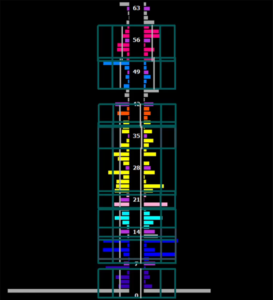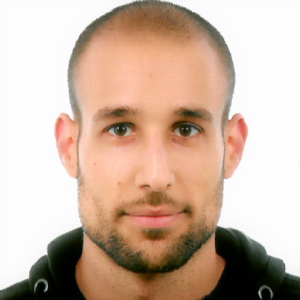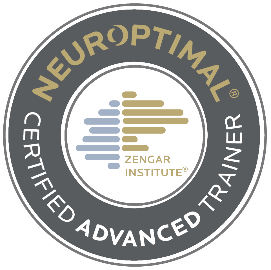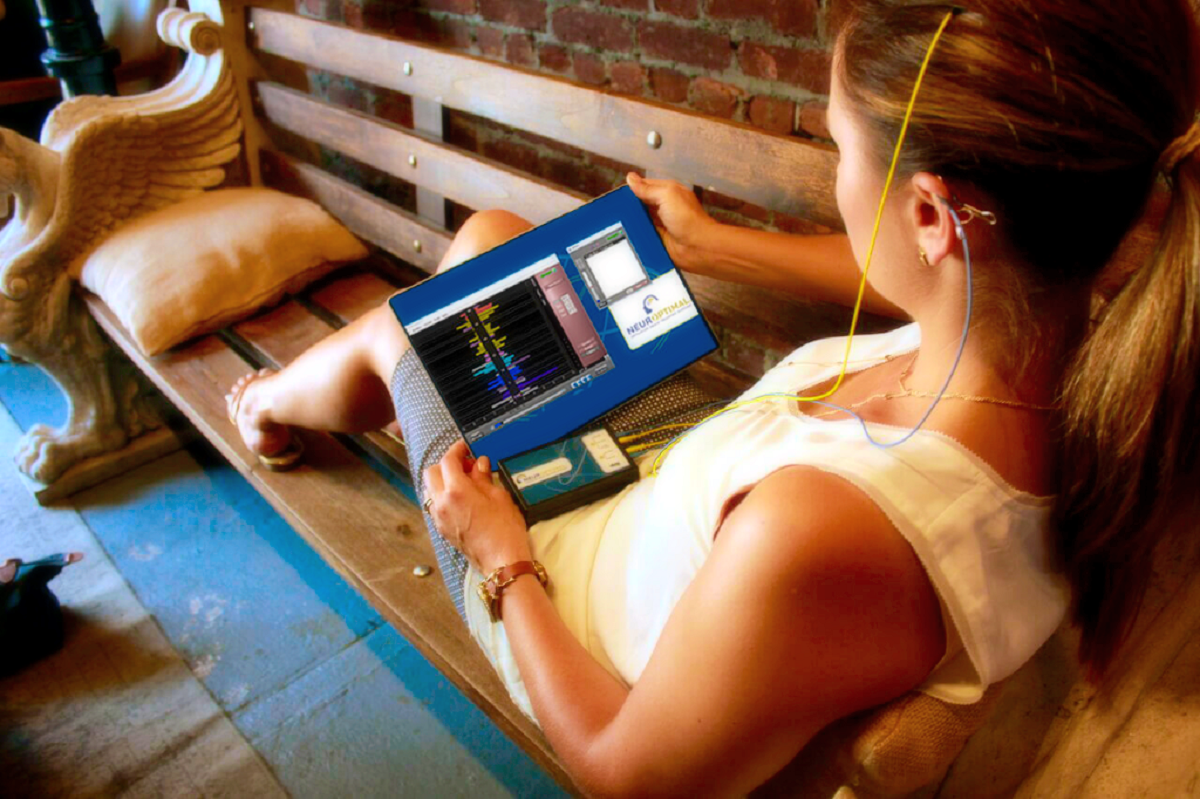Brain training with neurofeedback is a revolutionary safe method for many life benefits, such as self-esteem, the alleviation of suffering, happiness, presence, confidence, freedom, the ability to concentrate, and others.
How it works
When the brain is provided with information about its own activity, it transforms. That is the main principle underlying the neurofeedback technology, and this is the main way our brains learn in general, through feedback: action -> feedback from the world -> lesson. Neurofeedback can give access to quicker learning because the brain is provided with more accurate and time-sensitive feedback than is available in everyday life.
During a neurofeedback session the two sensors on your scalp detect your brain’s activity 256 times per second, and according to this activity (using appropriately tuned Joint Time-Frequency Analysis) the neurofeedback software brings up any points of ‘stuckness’ or inflexibility. Resilience and flexibility are the hallmarks of a well-functioning brain in all of life, be it in work, sports, music, relationships, stress resilience, mental flexibility, etc., and it is this potential within every individual that neurofeedback strengthens and optimizes.
 Resilience and flexibility
Resilience and flexibility
As mentioned, training with neurofeedback builds two very critical qualities all of our life, these are resilience and flexibility. We’ll first explain what we mean by these terms, and afterwards how these show up in the EEG.
Resilience has to do with steadiness of mind, emotional resilience, and having the ability to fully respond to the situation. A non-resilient person is commonly experiencing stress, is prone to burnout, negative emotions, indecisiveness, doubt, and can easily be overwhelmed by challenging situations. A resilient person is able to deal with difficult situations, to be confident, and therefore feels happier, more capable.
Flexibility is the capacity to visualize and consider different options as possible solutions to situations, and to easily switch between those and take appropriate action if needed. It is also the ability to interconnect, thus creating collaborative win-win relationships in work and life, cultivate an atmosphere which supports and enhances the life quality of everyone involved. Flexibility gives us the ability to switch tasks and different modes of being with no inner friction. The flexible person can easily understand many options available to a solution, take action, and be proactive with regard to the future.
 Resilience and flexibility in the brain
Resilience and flexibility in the brain
Let us see how these two concepts relate to brain activity. The figure below shows the frequency spectrum of the brain (EEG) from 0 to 64Hz.
Inflexibility in terms of brain activity appears as clinging to particular states (frequencies) and therefore not able to easily switch to another state, which is unhelpful to the individual, and also uses energy which would otherwise be used in other mental processes appropriate to the situation. All of us experience some inflexibility in terms of EEG. For example, sustained feelings of stress, or negative emotions and thoughts indicate a stuckness that is not able to move, limiting creativity, finding solutions to problems, or relating to others because e.g. the person may feel victimized by the circumstances and thus making it challenging to flow with peers and the environment. Another sign of inflexibility which is very common is the inability to sleep because our mind can’t switch off from the work of the day. The training, through its detection of state changes and the prompting of it to the brain through interruptions in music, facilitates the development of increased flexibility in the brain.
On the other hand, lack of resilience can be seen as lowered ability to come to a low-energy ‘neutral’ level when there is rest. This appears in the EEG as continuous unnecessary excursions in various frequencies. When there is lack of resilience in terms of EEG, it manifests like that also in reality. There is lack of centeredness and one tends to be easily overwhelmed under stress. We say that the person lacks steadiness, is not centered. All of us can become more resilient through training with neurofeedback, as we can rest more deeply in our own experience and become steadier through the training.
The field of neurofeedback is huge. We prefer to use dynamical neurofeedback (NeurOptimal), a non-invasive, safe, holistic technology to optimizing the brain, as we believe it to be the pinnacle of achievement in neurofeedback. More information can be found at www.life-arts.nl and www.neuroptimal.com.
 About the trainer
About the trainer
Nick Kontaras is an Advanced certified dynamical neurofeedback trainer with a technical background in feedback systems. He has a diploma in Life Skills Coaching, experience in mindfulness as a practitioner and teacher, and self-taught in concepts of well-being, including psychology, personal development, and neuroscience, particularly in terms of neurofeedback, meditation, and optimal brain functioning. He has attended retreats, conferences and seminars dedicated to health, wellness and the art of happiness and creative and meaningful work. He lives in the Netherlands since 2012, practices and teaches mindfulness since 2014 , and works in the field of neurofeedback since 2017.

















